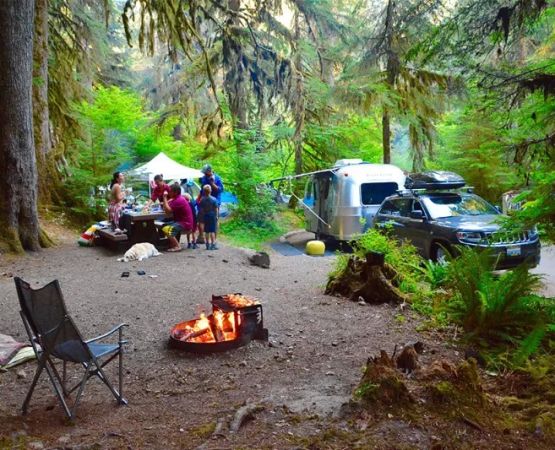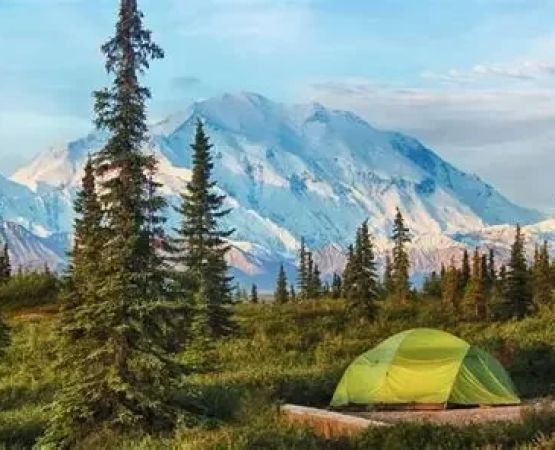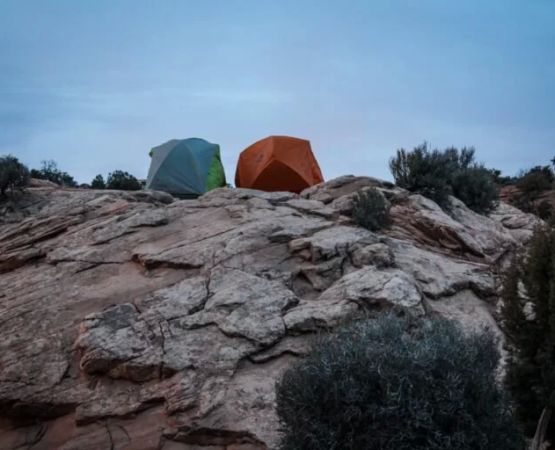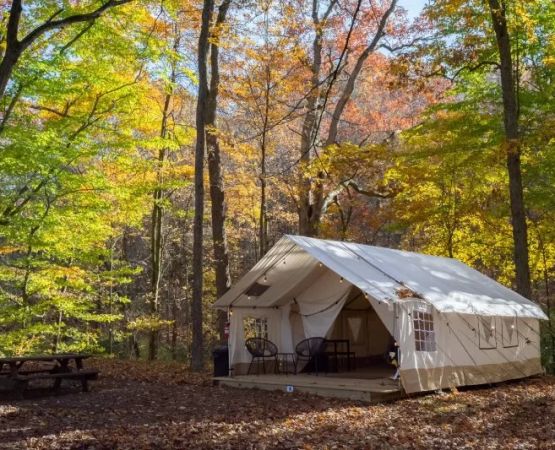- eco-friendly-camping-travel - Eco-Friendly Travel: Why Train and Transit Camping Is Growing
- east-coast-train-accessible-campgrounds - Top East Coast Campgrounds Accessible by Train
- west-coast-camping-by-public-transit - West Coast Escapes: Campgrounds Accessible by Public Transit
- midwest-and-south-train-travel-destinations - Midwest and Southern U.S. Campgrounds by Train
- planning-your-car-free-camping-trip - How to Plan a Car-Free Camping Trip
- real-traveler-stories - Real Traveler Stories: Adventures Without a Car
- embracing-sustainable-adventure - Embracing the Future of Sustainable Adventure
1. Eco-Friendly Travel: Why Train and Transit Camping Is Growing
Across the United States, an increasing number of travelers are seeking ways to enjoy the great outdoors without relying on cars. Train-accessible and public transit-friendly campgrounds are gaining popularity among those who value sustainability, affordability, and accessibility. Choosing to travel by train or bus isn’t just better for the environment—it also opens up a new kind of adventure that focuses on the journey as much as the destination.
1.1 The Rise of Green Camping Adventures
In recent years, eco-conscious travel has gone mainstream. Many campers now prefer to explore destinations reachable by Amtrak routes, regional buses, or city transit lines. This shift toward sustainable exploration reflects a desire to minimize carbon footprints while maximizing natural experiences. Plus, traveling by train allows adventurers to relax, enjoy scenic views, and arrive stress-free—no traffic, no parking, just pure travel bliss.
1.2 Why Accessibility Matters
Public-transit-accessible campgrounds aren’t just a convenience—they’re a necessity for many travelers. Students, retirees, and international visitors often rely on trains or buses to reach outdoor destinations. By highlighting these locations, we open the door for everyone to experience the beauty of American wilderness. At Pine Cliff Resort, we’re passionate about helping travelers find destinations that fit this eco-friendly lifestyle.
2. Top East Coast Campgrounds Accessible by Train
The East Coast offers some of the most accessible and scenic camping experiences for those traveling without a car. With major train routes like Amtrak’s Northeast Corridor, travelers can reach forested escapes and coastal parks with ease.
2.1 Acadia National Park, Maine
Take the Amtrak Downeaster to Brunswick, then hop on a local bus to Bar Harbor—gateway to Acadia National Park. This stunning destination offers coastal cliffs, forest trails, and serene lakes. The Island Explorer shuttle connects key park locations, making it easy to explore without ever needing a vehicle.
2.2 Shenandoah National Park, Virginia
Amtrak’s Cardinal line stops near Charlottesville, where travelers can connect via regional shuttles to Shenandoah’s breathtaking Skyline Drive. Campers can enjoy rolling mountain views, waterfalls, and wildlife sightings—all within a few miles of accessible trailheads.
2.3 Assateague Island, Maryland
Accessible from Ocean City via Greyhound and local transit, Assateague Island offers a rare coastal camping experience surrounded by wild ponies and salt marshes. It’s the perfect example of how public transit and adventure can go hand-in-hand.
3. West Coast Escapes: Campgrounds Accessible by Public Transit
The West Coast, with its mix of beaches, redwoods, and mountain ranges, is a paradise for car-free travelers. Amtrak routes like the Coast Starlight and Pacific Surfliner make reaching scenic campgrounds surprisingly easy.
3.1 Big Sur, California
Hop on the Pacific Surfliner to Salinas, then take the Monterey-Salinas Transit to Big Sur. Pfeiffer Big Sur State Park offers breathtaking ocean views, redwood forests, and riverside campsites. Though the journey may require a few transfers, the scenery along the way is part of the magic.
3.2 Mount Rainier National Park, Washington
From Seattle, take the Sound Transit route to Enumclaw, followed by a local shuttle to Mount Rainier’s entrances. This public-transit-friendly journey leads to lush meadows, glaciers, and one of the most iconic volcano views in the U.S. A well-timed trip in summer rewards travelers with wildflower blooms and crisp alpine air.
3.3 Oregon Coast State Parks
The Oregon Coast is famous for its continuous public transit network connecting towns and campgrounds along Highway 101. Whether you stop at Cape Lookout, Nehalem Bay, or Beverly Beach State Park, you’ll find scenic seaside camping just steps away from bus stops.
4. Midwest and Southern U.S. Campgrounds by Train
While the Midwest and South may be more spread out, there are still hidden gems accessible by train and regional transit for travelers who prefer slow, scenic routes.
4.1 Glacier National Park, Montana
Amtrak’s Empire Builder line stops right outside Glacier National Park at East Glacier and West Glacier stations. Few campgrounds in America are this easy to reach by train. Once inside the park, free shuttles take visitors to lakes, trails, and overlooks with views that define the word “breathtaking.”
4.2 Hot Springs National Park, Arkansas
Board Amtrak’s Texas Eagle route to Malvern, then connect to Hot Springs by shuttle or taxi. The park’s natural thermal springs, historic bathhouses, and forested campgrounds make it a relaxing retreat for train travelers seeking comfort and tranquility.
4.3 Starved Rock State Park, Illinois
Located near the Illinois River, Starved Rock is accessible via Amtrak from Chicago to Joliet and then by local bus. With waterfalls, sandstone canyons, and wildlife aplenty, it’s an ideal Midwest escape for hikers and photographers.
5. How to Plan a Car-Free Camping Trip
Planning a camping trip without a car takes a bit more coordination, but it’s absolutely worth the effort. Start by researching which Amtrak routes or regional buses serve your desired destination. Many parks provide shuttles that connect directly from stations to campgrounds. Booking ahead for both transport and campsite reservations ensures a smooth journey.
5.1 Packing Smart for Train and Bus Travel
Since you’ll be carrying your gear, focus on lightweight essentials. A compact tent, backpacking stove, and collapsible cookware save space. Always pack extra snacks and water, as not all transit routes have food services. Remember, train journeys are part of the adventure—enjoy the changing landscapes along the way.
5.2 Embracing Spontaneity and Discovery
Some of the best car-free trips happen when you allow flexibility. Stay open to exploring nearby trails or small towns along the route. The connections you make and the moments you stumble upon—like chatting with locals on the train or discovering a hidden beach—are what make these trips truly unforgettable.
6. Real Traveler Stories: Adventures Without a Car
Many travelers have shared inspiring experiences of exploring America’s natural wonders without driving. For instance, one Seattle-based couple chronicled their car-free journey from the city to Olympic National Park via ferry and bus, highlighting the joy of slow travel and deep connection with nature. Another solo traveler shared how her Amtrak trip to Glacier National Park became a life-changing experience that sparked her passion for sustainable travel.
6.1 What Travelers Say About Going Car-Free
“I realized that traveling without a car made me more present,” one camper wrote. “When you’re not focused on driving, you notice the small things—the smell of pine, the rhythm of the train, the way sunlight hits the mountains. It’s peaceful in a way driving never is.” These testimonials remind us that adventure isn’t about speed; it’s about connection.
7. Embracing the Future of Sustainable Adventure
Choosing campgrounds accessible by train or public transit is more than a travel choice—it’s a statement of care for the planet. As more travelers embrace this eco-friendly lifestyle, destinations across the U.S. are improving infrastructure to welcome car-free visitors. Whether you’re a seasoned backpacker or a first-time camper, you can experience America’s beauty sustainably and comfortably. For expert guidance and personalized recommendations, visit Pine Cliff Resort—your trusted source for eco-conscious outdoor travel inspiration.







